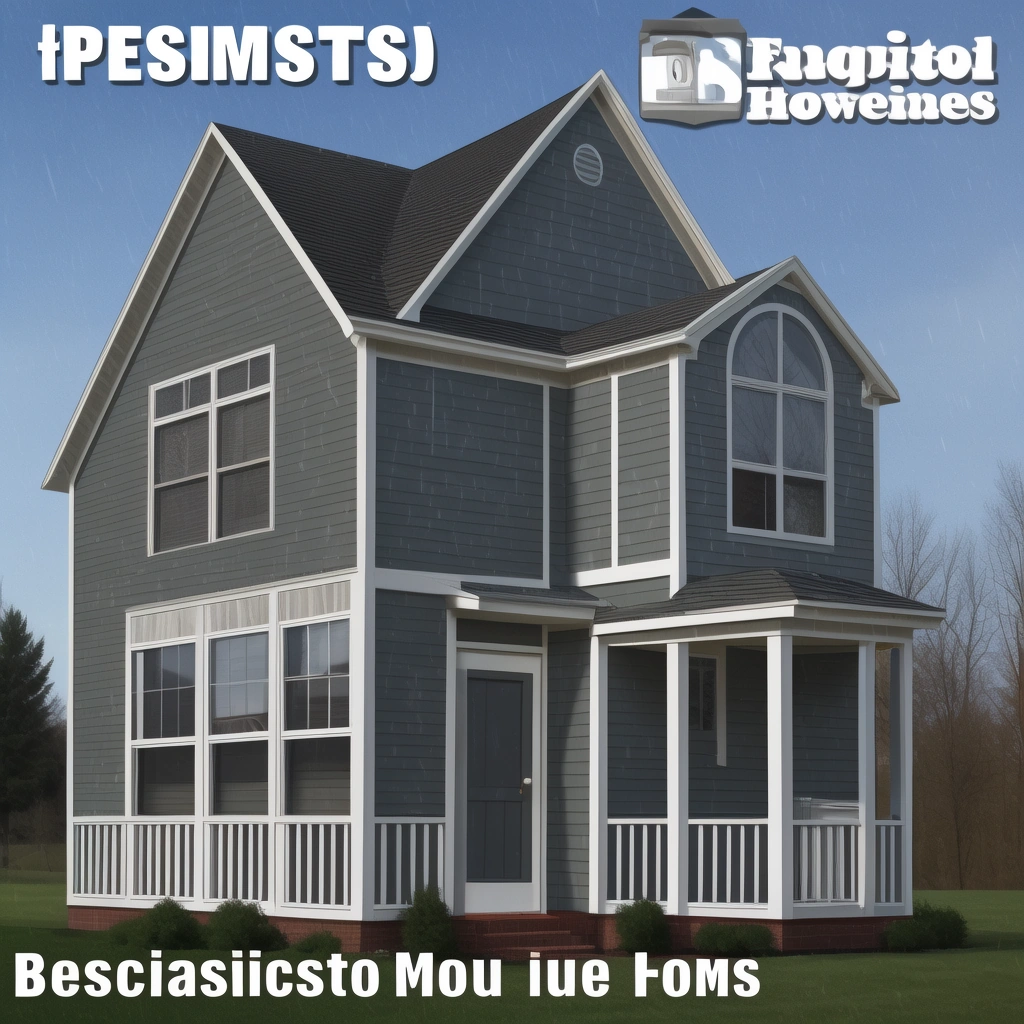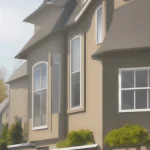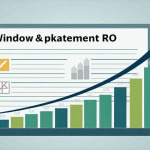Best Siding for Midwest Homes: Protecting Your Investment from Harsh Weather
Introduction: Battling the Midwest’s Elements
From the blistering summer sun to the deep freeze of winter, Midwest homes endure some of the most challenging weather conditions in the United States. These dramatic temperature swings, coupled with heavy snowfall, ice storms, and high winds, place an enormous strain on a home’s exterior. Choosing the right siding isn’t just about aesthetics; it’s a crucial investment in protecting your home, improving energy efficiency, and maintaining its value. The wrong choice can lead to costly repairs, increased energy bills, and a diminished curb appeal.
Selecting durable, weather-resistant siding is paramount for withstanding the Midwest’s harsh climate. For homeowners in this region, understanding the performance characteristics of various siding materials is essential for making an informed decision. The Midwest’s volatile climate demands a siding material that can handle extreme temperature fluctuations. Repeated expansion and contraction due to these shifts can cause inferior siding materials to warp, crack, and ultimately fail. This not only compromises the structural integrity of your home but also creates vulnerabilities for moisture infiltration, leading to rot, mold, and other costly damage.
Choosing a siding specifically engineered for harsh climates is crucial for long-term performance and protection. Materials like fiber cement and engineered wood, known for their durability and resistance to warping, offer a robust defense against the Midwest’s challenging weather patterns. Energy efficiency is another critical consideration for Midwest homeowners. The extreme temperatures necessitate efficient heating in the winter and cooling in the summer, both of which can significantly impact energy bills. Insulated siding options can help regulate indoor temperatures, reducing the strain on HVAC systems and lowering energy consumption.
When evaluating siding options, consider the R-value, which indicates the material’s thermal resistance. A higher R-value translates to better insulation and greater energy savings. Investing in energy-efficient siding not only benefits your wallet but also contributes to a smaller environmental footprint. Beyond the practical considerations of durability and energy efficiency, the aesthetic appeal of your home is also a key factor. Your home’s exterior is the first thing visitors see, and the right siding can significantly enhance its curb appeal.
Fortunately, a wide array of siding materials, colors, and styles are available to suit various architectural designs and personal preferences. From the classic look of vinyl siding to the modern appeal of fiber cement, homeowners can choose a siding that complements their home’s style and reflects their individual taste. Whether you prefer the traditional charm of wood or the sleek lines of contemporary materials, selecting the right siding can transform your home’s exterior and boost its market value.
Navigating the myriad of siding options can be overwhelming. Factors such as budget, architectural style, and the specific climate demands of your location all play a role in the decision-making process. Consulting with local experts, particularly those experienced in Midwest construction, can provide invaluable insights. They can assess your home’s specific needs, recommend suitable materials, and ensure proper installation for optimal performance and longevity. By considering these factors and seeking expert advice, Midwest homeowners can make informed choices that protect their homes, enhance their curb appeal, and provide long-term value.
Top Siding Choices for Midwest Homes
“Top Siding Choices for Midwest Homes:** Navigating the diverse climate of the Midwest requires careful consideration of your home’s exterior. Siding plays a crucial role in protecting your investment from harsh weather while contributing to energy efficiency and curb appeal. Choosing the right siding involves balancing cost, durability, maintenance requirements, and aesthetic preferences. Let’s explore some of the top siding options for Midwest homes: **Vinyl Siding:** A perennial favorite for its affordability and versatility, vinyl siding offers low maintenance and a wide array of colors and styles.
Its resistance to moisture and insects makes it a practical choice for the Midwest’s humid summers. Technological advancements have improved vinyl’s durability and resistance to fading, making it a long-lasting option. For example, insulated vinyl siding can further enhance energy efficiency by reducing heat transfer, leading to lower energy bills. However, vinyl can be susceptible to cracking in extreme cold, a factor to consider in northern Midwest climates. **Fiber Cement Siding:** Engineered for exceptional durability and weather resistance, fiber cement siding stands up to the Midwest’s fluctuating temperatures, strong winds, and heavy precipitation.
Mimicking the look of wood or masonry, it offers a higher-end aesthetic without the maintenance demands of these traditional materials. While fiber cement comes at a higher initial cost than vinyl, its longevity and resilience can translate to long-term savings. Homeowners in areas prone to hail appreciate its impact resistance. Pre-finished options minimize maintenance, while factory-applied colors offer consistent quality and UV protection. **Engineered Wood Siding:** This option captures the natural beauty of wood with enhanced resistance to rot, insects, and moisture.
Engineered wood siding offers design flexibility, allowing for various textures and styles. Regular maintenance, including painting and sealing, is essential to protect it from the elements and maintain its appearance, especially in the Midwest’s harsh climate. Consider the long-term maintenance commitment before choosing this option. **Steel Siding:** Known for its exceptional strength, steel siding stands up to impacts, fire, and pests. Its robust nature makes it a good choice for areas prone to hail or high winds.
Proper sealing is crucial to prevent rust, a particular concern in the Midwest’s snowy winters. While steel siding requires less maintenance than wood, periodic inspections and touch-ups are necessary to maintain its protective barrier. Modern steel siding options offer a range of colors and profiles, enhancing curb appeal. **Brick:** A classic and timeless choice, brick offers superior protection, energy efficiency, and enduring beauty. Its inherent fire resistance and low maintenance make it a valuable investment.
Brick’s thermal mass helps regulate indoor temperatures, reducing energy consumption during both summer and winter. However, brick siding comes at a premium cost. Its weight also requires a strong foundation, adding to the overall project expenses. Despite the higher upfront investment, brick’s longevity and minimal maintenance can offer long-term value. Choosing the right siding for your Midwest home requires careful evaluation of your budget, aesthetic preferences, and the specific climate challenges in your area. Consulting with local siding experts is essential to determine the best material to withstand the unique weather patterns of your region and ensure long-lasting protection for your investment.
Choosing the Right Siding: A Personalized Approach
Choosing the right siding for your Midwest home is a multifaceted decision that goes beyond mere aesthetics. It requires careful consideration of your budget, the architectural style of your home, and the unique climate demands of the Midwest. This region experiences extreme temperature fluctuations, high winds, heavy snow loads, and intense sun exposure, all of which can take a toll on your home’s exterior. Selecting a durable, weather-resistant siding is crucial for protecting your investment and ensuring long-term performance.
Budget is often a primary concern for homeowners. Vinyl siding remains a popular choice due to its affordability and relatively low maintenance requirements. While it offers a good balance of cost and durability, higher-grade vinyl siding is recommended for optimal weather resistance in the Midwest’s harsh climate. Fiber cement siding, while more expensive, offers exceptional durability and a longer lifespan, ultimately providing a higher return on investment over time. Engineered wood siding offers the aesthetic appeal of natural wood at a lower price point than traditional wood siding but requires more diligent maintenance to withstand Midwest weather extremes.
Consider the long-term costs, including maintenance and potential repairs, when evaluating different siding options. The architectural style of your home should also guide your siding choice. A historic Victorian home, for example, might benefit from the classic look of brick or the intricate detailing of fiber cement siding designed to mimic traditional wood clapboard. A modern farmhouse, on the other hand, might be better suited to the clean lines of lap siding, whether vinyl, fiber cement, or engineered wood.
Steel siding, with its robust durability and modern aesthetic, can be a compelling option for contemporary homes. Choosing siding that complements your home’s architectural style enhances curb appeal and preserves its character. The specific climate demands of your location within the Midwest should heavily influence your decision. Homes in areas with heavy snowfall might benefit from a more robust siding material like steel or fiber cement, which can withstand the weight and impact of snow and ice.
In regions prone to high winds, proper installation is paramount, regardless of the material chosen, to prevent damage and ensure the siding stays securely in place. Consult with local siding experts and contractors who understand the nuances of Midwest weather patterns. They can offer valuable insights into the best materials and installation practices for your specific area, ensuring your home is well-protected from the elements. Energy efficiency is another critical factor to consider, especially in the Midwest with its extreme temperature swings.
Insulated siding options, such as vinyl siding with foam backing or insulated vinyl siding panels, can significantly improve your home’s energy efficiency by reducing heat transfer. This can lead to lower energy bills and a more comfortable indoor environment year-round. Choosing energy-efficient siding not only protects your home from the elements but also contributes to long-term cost savings and a smaller environmental footprint. Investing in high-quality, weather-resistant, and energy-efficient siding is a proactive measure that safeguards your home, enhances its value, and provides peace of mind for years to come.
Installation Best Practices: Ensuring Longevity and Performance
Proper installation is crucial for any siding material, especially in the Midwest, where harsh climates demand precision and expertise. Poor siding installation is more than just an aesthetic issue; it’s an open invitation to moisture damage, significantly reduced energy efficiency, and premature wear that can compromise your home’s structural integrity. Imagine improperly sealed seams allowing winter’s freezing rain to seep behind the siding, leading to mold growth and wood rot – a common and costly problem in the region.
Ensuring your contractor is not only licensed but also deeply experienced with Midwest siding best practices and meticulously follows manufacturer guidelines is paramount for optimal performance and long-term home protection. The nuances of siding installation in the Midwest extend beyond basic techniques. For instance, consider the expansion and contraction rates of different materials in response to extreme temperature swings. Vinyl siding, a popular and affordable choice, requires careful attention to overlapping and fastening to allow for movement without buckling or cracking.
Fiber cement siding, known for its durability and resistance to harsh climates, demands precise cutting and sealing to prevent water absorption, which can lead to swelling and eventual failure. Even the best siding materials will underperform if not installed with a keen understanding of these regional challenges. Choosing the right contractor is an investment in your home’s future. Don’t hesitate to ask for references and examine their previous work, specifically focusing on projects in similar climates.
A reputable contractor will be well-versed in local building codes and will be able to advise you on the best siding materials for your specific needs and budget. They should also provide a detailed installation plan, outlining the steps they will take to ensure proper weather-resistant siding and energy efficiency. A thorough cost comparison, considering both material and installation expenses, is essential for making an informed decision. Furthermore, proper flashing around windows, doors, and other openings is non-negotiable.
These are critical areas where water can easily penetrate, leading to significant damage over time. The contractor should also pay close attention to the vapor barrier behind the siding, ensuring it is properly installed to prevent moisture from migrating into the wall cavity. Ignoring these seemingly small details can negate the benefits of even the most durable siding, leading to costly repairs down the road. Think of the vapor barrier as your home’s raincoat – essential for keeping it dry and protected from the elements.
Finally, remember that the best siding materials, whether it’s vinyl siding, fiber cement siding, engineered wood siding, steel siding, or even brick siding, are only as good as their installation. Skimping on professional installation to save money upfront is a false economy. Investing in experienced installers who understand the unique demands of Midwest weather will pay dividends in the form of reduced energy bills, fewer repairs, and a longer lifespan for your home’s exterior, ultimately safeguarding your investment and ensuring lasting peace of mind through every season.
Maintenance Tips: Protecting Your Investment
Protecting your investment in new siding for your Midwest home requires a proactive approach to maintenance. Regular upkeep not only extends the lifespan of your siding but also preserves its curb appeal and contributes to the overall value of your property. Just as routine oil changes keep a car running smoothly, consistent siding maintenance prevents small issues from escalating into costly repairs. A small investment of time and effort can save you significant expenses in the long run.
Begin with an annual inspection of your siding, preferably in the spring or fall when the weather is milder. Look for signs of damage such as cracks, chips, warping, or loose panels, paying particular attention to areas exposed to harsh weather conditions like the south and west-facing walls. In the Midwest, where temperature fluctuations are extreme, expansion and contraction can stress the siding, making these inspections crucial. Document any damage with photos and notes for future reference.
For example, note the location and severity of any cracks in your fiber cement siding or check for fading and chalking on vinyl siding, common issues exacerbated by intense Midwest sun. Cleaning your siding according to manufacturer recommendations is essential for maintaining its appearance and performance. Different siding materials require different cleaning methods. Vinyl siding typically benefits from a gentle wash with a garden hose and a soft-bristled brush, while fiber cement may require a specialized cleaner to remove dirt and mildew.
Pressure washing, while effective, should be used with caution as excessive pressure can damage some siding materials. Always consult the manufacturer’s guidelines to avoid inadvertently voiding any warranties. For instance, using a harsh chemical cleaner on engineered wood siding could strip its protective coating, leaving it vulnerable to moisture damage from Midwest snow and rain. Addressing any damage promptly is critical to preventing further issues. Small cracks or chips in fiber cement siding can be repaired with a patching compound, while damaged vinyl panels may need to be replaced.
Loose or missing pieces of siding can compromise the weather resistance of your home, allowing moisture to penetrate and potentially leading to rot, mold, or even structural damage. In the Midwest’s harsh climate, where homes face everything from heavy snowfall to driving rain, maintaining the integrity of your siding is paramount. Consider consulting a qualified siding professional for repairs to ensure they are done correctly and with materials compatible with your existing siding. This is particularly important for complex repairs or if you’re unsure about the best course of action.
Beyond these essential maintenance tasks, consider the specific challenges posed by the Midwest climate. Applying a weatherproofing sealant to vulnerable areas, such as around windows and doors, can provide added protection against moisture intrusion. Ensuring proper attic ventilation can also help regulate temperature and humidity levels, reducing stress on your siding. These preventative measures, combined with regular inspections and cleaning, will contribute to the longevity and performance of your siding, protecting your home from the elements and preserving its value for years to come. Ultimately, a well-maintained exterior enhances your home’s curb appeal and provides peace of mind knowing your investment is protected from the unique demands of Midwest living.


